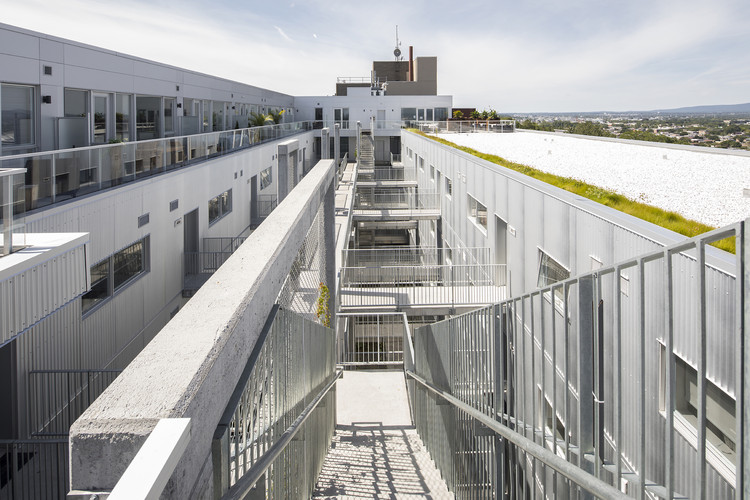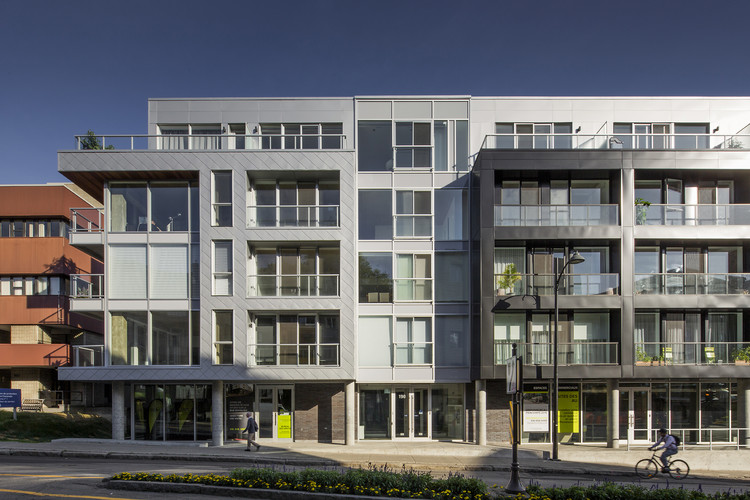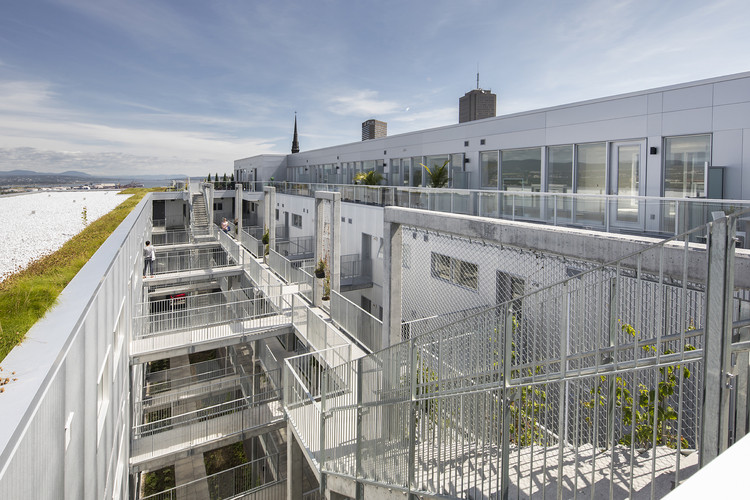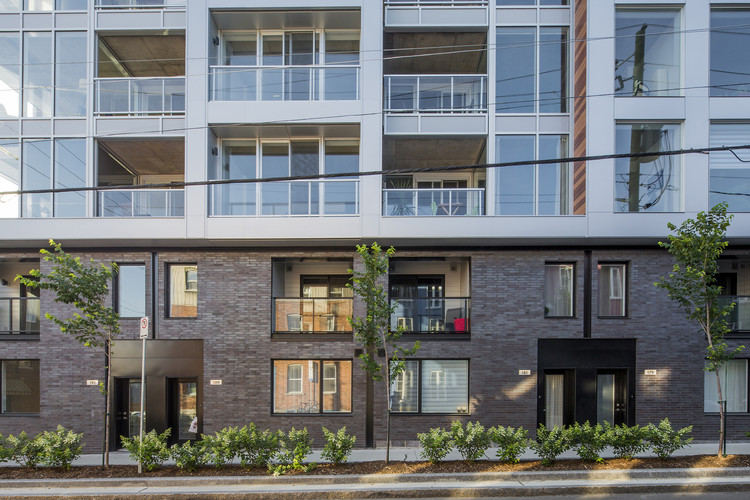
-
Architects: Fugère architecture
- Area: 19500 m²
- Year: 2017
-
Photographs:Jonathan Robert
-
Lead Architects: Claude Fugere/ Carolyne Le Gallais

Text description provided by the architects. The Tandem is a 5-story residential building located in the very animated Faubourg St-Jean nearby the Old-Quebec area. The site has been the subject of many debates over the years. A car park, considered as a scratch in the urban fabric of the area, was now given new spirit with the new building.

On Saint-Jean Street, the ground floor offers local shops and facilities to serve the community and to provide the necessary actions to create a great neighborhood spirit. The Tandem offers eleven 2-story townhouses overlooking the Richelieu Street. Appartements on the upper levels enjoy the indoor courtyard in the center of the project that allows every unit to benefit from a flow-through effect, created by the openings at both extremities of each apartment. A system of exterior gateways also allows each apartment to have its own private entrance.

While developing the Tandem project, architects included a lot of elements to meet the current requirements of sustainable development and densification. For example, the orientation of the building, the vegetation on the courtyard, the choice and the positioning of the doors and windows, as well as the white roof with large surfaces covered with vegetation, will reduce the heat island effect and the ecological footprint of the project. The Tandem also proposes a vertical garden as a privacy screen, which contributes to the natural cooling of the whole building. The East façade integrates a vegetal wall to ensure continuity with the courtyard.



The yard’s geometry has been modulated according to the sun's path to maximize natural lighting. The units volumetry on the roof is set back from the courtyard to minimize sunlight shadows. Also, the layout of the inner courtyard reduces the energy consumption of artificial lighting and mechanical cooling through the development of housing which provides their occupants living areas well ventilated and flooded with natural light.



The material expression of the new building is a response to the distinctive elements of the neighborhood. The brick, the metal, the glass conjugated with the wood are thus expressed through the project by a current architectural vocabulary. The brick is used in the foundation of the building and in the treatment of townhouses. The upper part of the building is designed lightly with metal coatings such as Canadian sheet metal, a nod to the roofs of the neighborhood. A wood-like material is used on the inner faces of the balconies, a reference to the oriels of the neighboring houses.










































